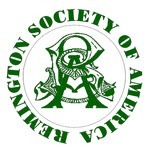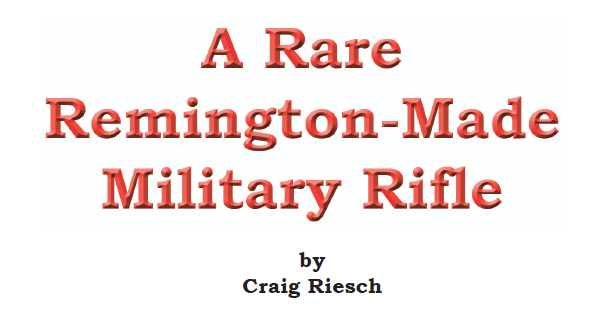
I recently acquired an interesting single shot, breechloading
bolt action rifle designed by Bethel Burton of
Brooklyn, New York [see Figure 1, below]. Burton was
a firearms designer who had the vision to design one of the
early breech-loading bolt-action rifles, first patented on December
20, 1859. His design employed a percussion system,
but was unsuccessful in attracting the attention of the U.S.
Ordnance Department, even during the Civil War.
Part of the problem may have been due to Burton’s
arrest by federal marshals, along with two of his partners,
on September 12, 1861, for attempting to manufacture his
patented rifle for the Confederacy. He had secured a contract
to manufacture 40,000 to 50,000 rifles for the Commonwealth
of Virginia, but was only able to produce sample
rifles prior to his arrest in New York. Burton was detained
for less than a year at Fort Warren, and after taking an oath
of allegiance to the United States, was no longer considered
a threat and was released.
Burton redesigned and improved his rifle to use
a metallic fixed cartridge and received a new patent on
August 11, 1868. The bolt and receiver employed an interrupted
thread for positive locking [see Figure 2]. Burton
submitted samples of the new design to major foreign
powers for military consideration. The Burton rifle was well
received in Great Britain, Spain, Italy and considered in |
|
France and Russia. During the Italian Small Arms Trial the
Burton rifle was chosen as the best breech-loading rifle, but
for reasons now unknown, the Italian Government manufactured
and issued a different rifle to its troops.European and American engineering publications
of the period praised the new Burton design as being one of
the best new breech-loading designs. During the fair hosted
by the American Institute of New York in 1870, Bethel Burton
was awarded a metal for “the best breech-loading rifle.â€
Bethel Burton was also active in the United States,
attempting to get his design accepted by the military. The
second post-war, U.S. Army Small Arms Board was the
1866 Hancock Board, in which Burton submitted a .50
caliber carbine. Burton later submitted sample rifles to the
State of New York Small Arms Board in 1867, and again in
1869 to the U.S. Navy Small Arms Board. None of the organizations
adopted Burton’s carbine or rifle.
During the New York Small Arms Board, Burton
met Colonel William G. Ward, a member of the Board.
Ward was fascinated with Burton’s design and the two
eventually became partners. Burton’s patent was reissued
on November 2, 1869 adding William Ward’s name to the
patent and the rifle was now referred to as the Ward-
Burton. |

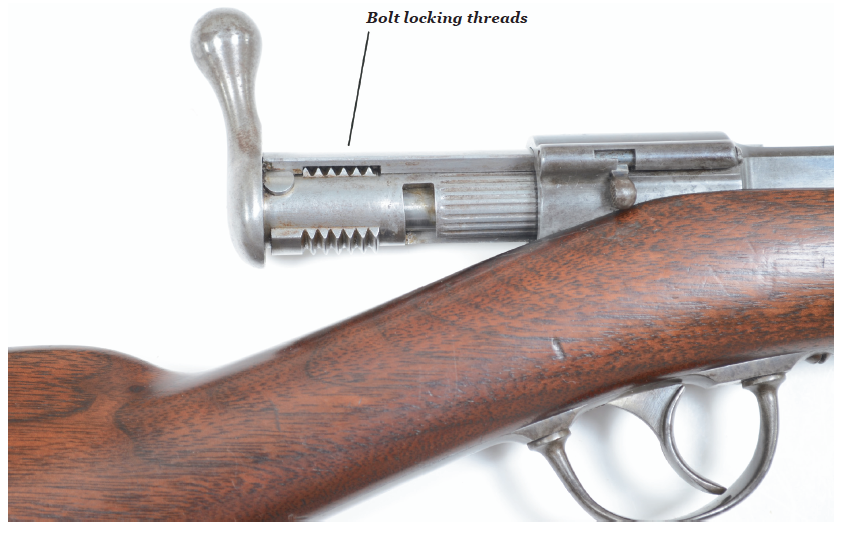
Three Pattern 1868 rifles in different calibers were
submitted to the St. Louis Small Arms Board by Ward
and Burton in 1870, and their .50 caliber rifle was recommended
for field trials. The Burton Pattern 1868 rifle was
the predecessor to the U. S. Model 1871 Ward-Burton Trial
rifle, the first bolt-action rifle to be manufactured at Springfield
Armory in 1871. The
Armory was ordered to manufacture
1,011 Ward Burton
rifles in .50-70 Govt centerfire
and 316 carbines in .50-55
centerfire for field trials. The
Ward-Burton design was
rejected for parts breakage as
well as safety concerns and
the Model 1873 Springfield
rifle and carbine in .45-70
Govt were eventually adopted
by the U.S. Army.
Burton military rifles — as distinct from the Ward-Burton
rifle — have been observed in four calibers:
.58 conversion, .50 caliber, .45 bottlenecked case and .42
bottlenecked case, all in centerfire. My Burton rifle is chambered
for the .45 caliber bottleneck cartridge and the bore
has six lands and grooves. Springfield Armory produced
barrels had three lands and grooves.
While I was researching this unusual rifle I started
to think about where the rifle had been manufactured, as
various parts were definitely not produced by the Springfield
Armory… and Burton did not own his own production
facilities. The only marking on the rifle is:
BURTON’S PAT. / DEC. 20th 1859 / AUG. 12th 1868
on top of the bolt [see Figure 3, below].
The 1871 Trials rifles and carbines manufactured by
Springfield Armory had both Ward’s and Burton’s names
on top of the bolt and were not serial numbered.
The rifle I acquired also has the fitting number 28
stamped on the receiver, barrel, trigger, trigger plate and on
the stock near the butt swivel plate. The inside of the stock
is marked XXVIII in the receiver bed. |
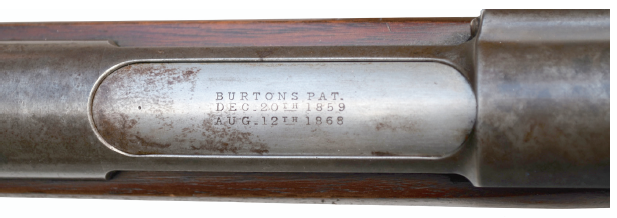
As I studied the parts on the Burton rifle, the first
part that caught my attention was the cleaning rod tip. The
tip was formed identically to the cleaning rod tips found on
both Remington rolling block rifles and Lee magazine rifles
manufactured by E. Remington & Sons.
[see Figure 4, to the right]
The following parts installed on my Burton rifle are
typical of those parts found on Remington made military
rifles of the period.
- 1. Barrel Bands:
The three barrel bands on the Burton rifle have the U on
the left side when the open end of the U faces the muzzle,
which is consistent with Remington barrel bands. Springfield
Armory and contract musket barrel bands were
marked on the right side with the opening of the U facing
the muzzle. [see Figure 5, below]
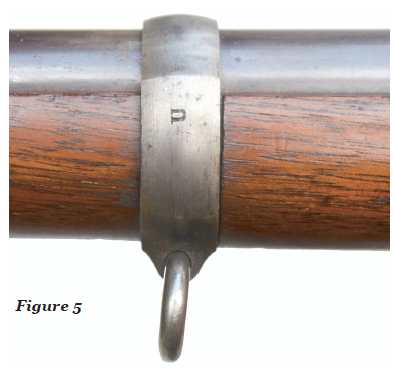
- 2. Middle Band Swivel:
The swivel was pinned in place at the bottom, outside of the barrel band
after it was installed. The swivel is marked, Pat’d Feb 11th 1868. The
U. S. Patent number is 74,427, titled “Improvement In Strap-Ring For
Firearms†and was assigned to Joseph Rider and to E. Remington and
Sons.
- 3. Butt Swivel:
After installation, the butt swivel was also pinned in place through the
outside of the butt swivel plate and the swivel was marked, Pat’d Feb
11th 1868. This was typical of Remington manufactured butt swivel
assemblies of the period [see Figure 6, to the right].
|
|
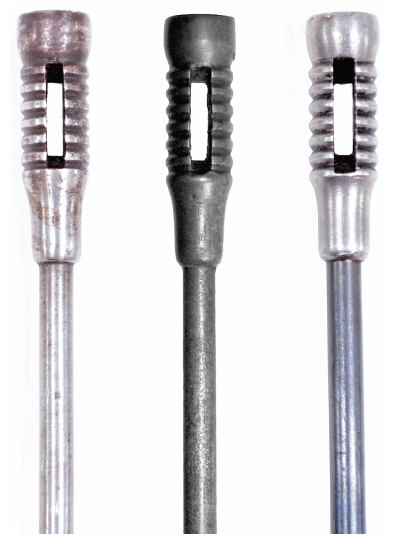
 Notice how the swivel was pinned in place on the middle Notice how the swivel was pinned in place on the middle
band and butt swivel. This was typical of Remington’s
butt swivel assemblies of the period. |
- 4. Band Springs:
The Burton rifle band springs are shorter with rounded ends and wider
than band springs installed on Springfield Armory or contract muskets.
The ends of Springfield Armory band springs were squared. Remington
manufactured band springs of this period are rounded at the muzzle
end and are identical to the band springs on the Burton rifle.
- 5. Rear Sight:
The rear sight is the same or similar to those found on other Remington
military rifles of the period. The seven Remington rolling block rifles
and the two experimental Freeman Rifles (manufactured by E. Remington
& Sons) that were photographed and reported in Ordnance Memoranda
#15, published in 1873, clearly show rear sights and cleaning rods
that are identical to the ones on the Burton rifle.
[for rear sight, see Figure 7 on page 23].
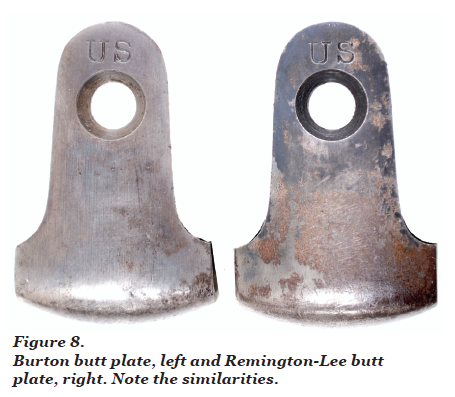
|
|
-
- 6. Butt Plate:
The butt plate on the Burton rifle is interchangeable
with the Remington Lee butt
plate and the U S font is identical on both
[see Figure 8, below left]. The Burton butt
plate is not interchangeable with Springfield
Armory or contract musket butt plates,
which are slightly larger.
After further research into the
component parts of my Burton rifle it is my
belief that this small quantity of Burton rifles
were indeed manufactured by the Remington
Arms Company in the 1868-69 time frame.
Some correspondence has been uncovered
between Bethel Burton and E. Remington & Sons in
regard to possible patent infringements for manufacturing
a few sample guns. [see Figure 10 on the
next page]. It would be beneficial if some documentation
showing a request from Bethel Burton, or a
production order for a quantity of rifles to be made
could be found.
I believe this Burton rifle to be part of a
small Remington manufacturing run making it a
rare E. Remington & Sons-made rifle. As a side
note, Remington manufactured magazine rifles under
a Navy contract for the Lee Arms Company and
the only marking on those rifles was Lee Arms Co.
Bridgeport, Conn. U.S.A. and Patented Nov. 4, 1879
with the serial number marked on the receiver. Like
the Burton rifle, there were no Remington markings
on the Lee rifle, but the rear sights, cleaning rods,
etc. were clearly of Remington manufacture. |
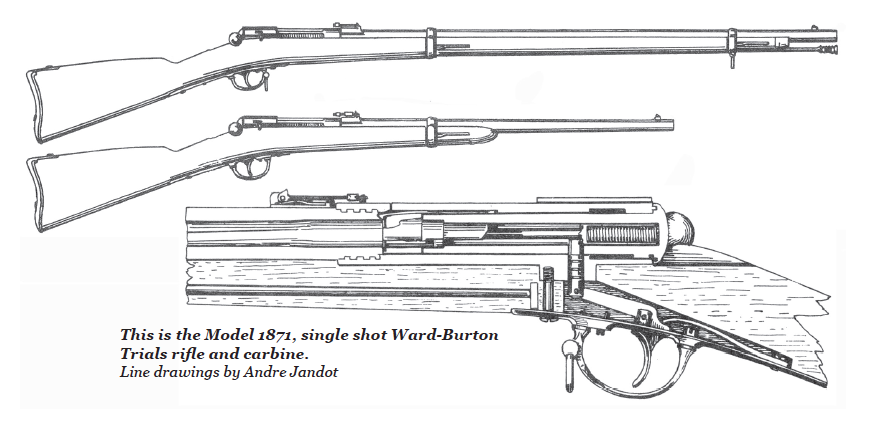
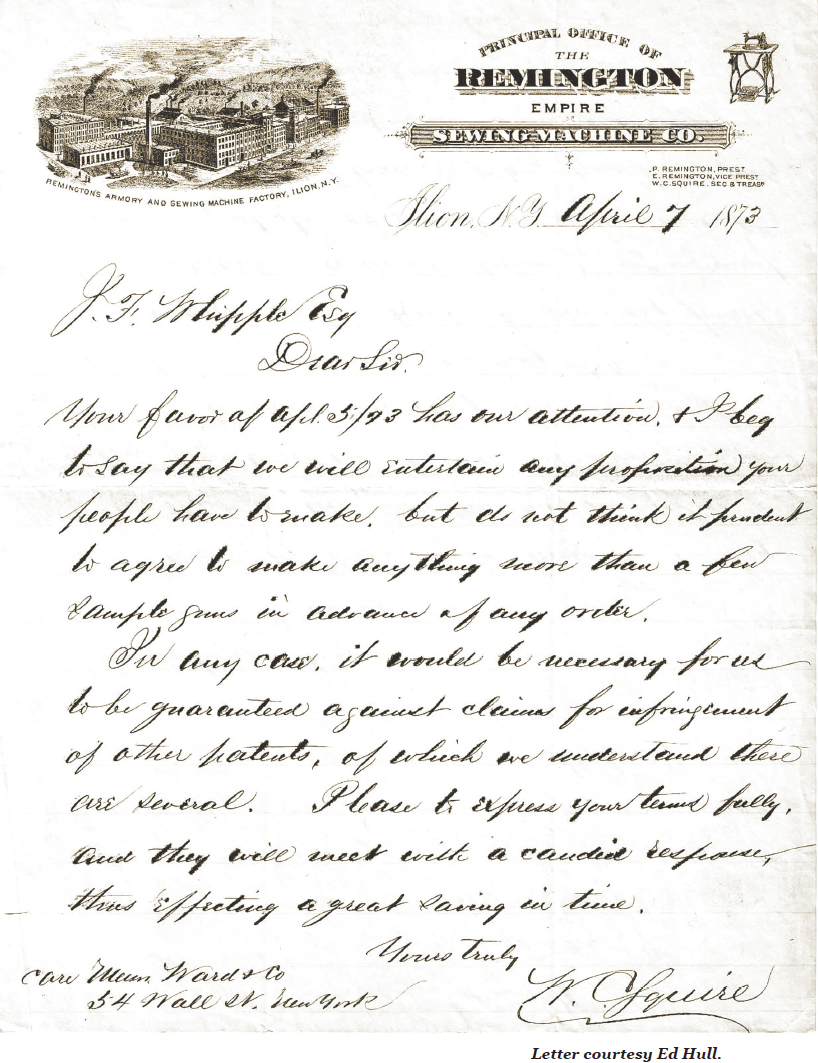
Bethal Burton devoted much
of his life to designing firearms and he
gathered a great deal of praise and interest,
but to no avail. His first patent was
granted in 1859 and his last patent for
a machine gun in 1905, shortly after his
death. He was never able to secure a military
contract, American or foreign, and
his efforts in the commercial field were
dismal. Perhaps the Burton bolt-action
design was too far ahead of its time to
gain acceptance. Even as he worked hard
to sell his design concept, many nations,
including the United States, were adopting
bolt-action repeaters that in some
respects, were inferior to his. |
|
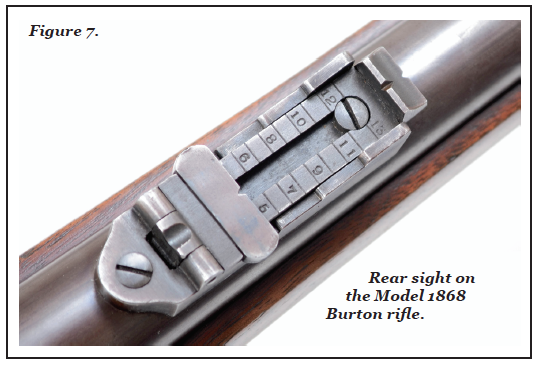 |
Today, Bethel Burton is nearly forgotten as a firearms designer. Few standard reference works on
the development of the bolt-action rifle even include his name and work. Yet he was amazingly foresightedand in the 1870s and early 1880s, his designs might have been considered superior if he had obtained
the backing of a major nation’s ordnance engineers.
My thanks to Ed Hull and Joe Poyer for research and editorial assistance.
All photographs by Joe Poyer.
Bibliography
vis, U.S. Army, Major George W., Perry, Leslie, J and
Joseph W. Kirkley, War of the Rebellion, Series II-Volume
II (Pages 749-766), Washington: Government Printing Office
1897.
Hicks, Major James E., U.S. Firearms 1776 – 1956. Published
by James Hicks & Son, La Canada, California, 1957.
Marcot, Roy. Spencer Repeating Firearms, Northridge
Heritage Press, P.O. Box 18395, Irvine, California,
92714. 1985.
Norton, Brevet Brig. Gen. U.S.V., American Breech-
Loading Small Arms, F. W. Christern, 77 University
Place, N.Y. 1872.
Ordnance Memoranda No. 11, A. B. Dyer, Chief of
Ordnance, Washington: Government Printing Office
1870
Ordnance Memoranda No. 15, Small Arms Ordnance
Board, Washington: Government Printing Office, 1873.
Report of the Board For Examination of Breech-Loading
Small Arms, State of New York , Albany, Weed,
Parsons and Company, Printers 1867.
Report of the Chief of Ordnance to the Secretary of
War, F/Y June 30, 1873, Chief of Ordnance
Washington: Government Printing Office 1873.
Reports of the Secretary of the Navy and of the Postmaster
General, Secretary of Navy & Postmaster General,
Washington: Government Printing Office 1871
Spon’s Dictionary of Engineering, Vol. II, Byrne &
Spon. London, E & F. N. Spon, 48 Caring Cross 1874.





 Notice how the swivel was pinned in place on the middle
Notice how the swivel was pinned in place on the middle


